Review of The Last of the Mohicans
Introduction
When you think of TV adaptations of `The Last of the Mohicans`, most people would default to Daniel Day Lewis in the 1992 adaptation. I know I did. This little -seen 1971 BBC adaptation is quite a different thing altogether.
On the plus side, in common with many BBC literary adaptations and historic dramas, there is a slavish adherence to the original text. This adaptation is more closely aligned to the narrative of Fenimore Cooper`s 1826 novel than many subsequent outings. On the minus side, this is turgidly slow-moving and creakingly low-tech.
Spread out across eight episodes, and running for a full six-hours, this adaptation spends more time on the human and cultural differences between the `savages` and the French during the Indian wars of the 1750`s.
Unfortunately, due to early seventies production values (with grainy 16mm film exteriors switching to primitive colour video for interiors), it`s really quite difficult to suspend disbelief and become fully engaged in the story. Like amateurish theatre productions, you`re constantly aware that you`re watching actors playing out an unreal drama. This isn`t helped by some very wooden acting, and direction that could only be described as the polar opposite of `tight`. One typical example is that every journey is played out in full, never adopting the Hitchcock recommendation to show the start and end of journey`s only, unless something other than travelling happens in-between.
To those young sophisticates used to watching fast-paced CSI styled drama, this will prove unwatchable. For once, less would have been more but then the BBC had eight long slots to fill.
Having said all that, there is something charmingly innocent about the whole thing. Nostalgia freaks used to the achingly slow pace of very early Dr. Who, for example, may enjoy the atmosphere created here.
I suppose it`s possible that fans of the novel may also like this. After all, it`s a relatively faithful adaptation of the work from a dialogue and `nuts and bolts` point of view. But even Mark Twain lampooned the original novel for it`s drearily formal writing style, and perhaps a few well-thought through departures would have given this a little bit more excitement.
If you are able to suspend disbelief (and it happened very occasionally for me) then the story is quite absorbing, in a `derring do` cliff-hanger kind of a way.
For those who have no previous knowledge of the book, `The Last of the Mohicans` features a classic wild-west style hero, Natty `Hawkeye` Bumppo along with his Indian side-kick Chingachgook (and Chingachgook`s son, Uncas) are tasked with escorting two plucky sisters, Cora and Alice Munro, across `Indian country` and French occupied territories to Fort William Henry where their father, Commander Munro, is stationed and who hasn`t seen his girls since they were children.
Also along with this `Lord of the Rings` type travelling party are Major Duncan Heyward, who is a typically uptight British soldier who is constantly shown up by Hawkeye, as well as a musician, David Gamut.
After their Indian guide Magua leads the girls the wrong way and into an Indian trap, it is Hawkeye and his merry men who come to their rescue. However, Magua escapes and returns (again and again) with his fellow Indian`s to try and kidnap the Commander`s daughters.
Kenneth Ives, plays `Hawkeye` in a likeably laid back way that contrasts sharply with the formally uptight officers who see themselves as his superiors, despite lacking any of his practical skills. However, he`s horribly let down by some of the rest of this cast. We have some of the worst Scottish accents imaginable (why not employ native Scots for the tasks) as well as a plethora of frighteningly British actors made-up to look like Native Indians.
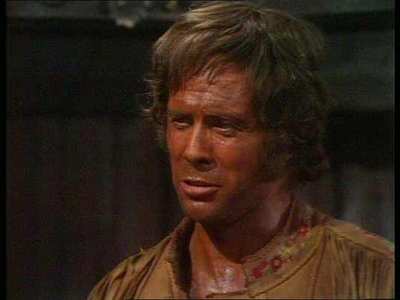
Video
In common with other period BBC releases, `The Last of the Mohicans` has probably been cobbled together from a variety of sources. Most video tapes that were held in the UK archives were wiped for re-use at this time, though as the series aired on PBS in the USA in 1972, there`s every chance that these are the tapes that survived. This may mean that in addition to the already grim looking video quality there has also been an NTSC conversion from the PAL Masters and back again. Whatever the case, it`s acceptable enough as long as you`re not expecting a contemporary looking programme.
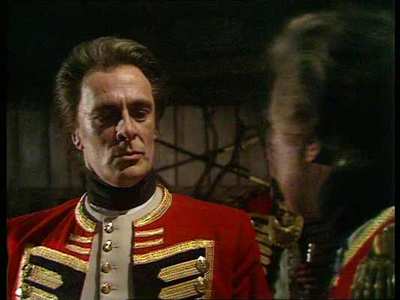
Audio
Presented in Dolby Digital Mono, the soundtrack really matches the quality of the pictures. It`s wildly variable - with warm sound on occasional close-ups intercut with much livelier sound on the wides. But then again, this was made nearly 40 years ago and probably never expected to be dusted off, re-mastered and re-presented in this way so I don`t think it makes sense to be too negatively judgemental.
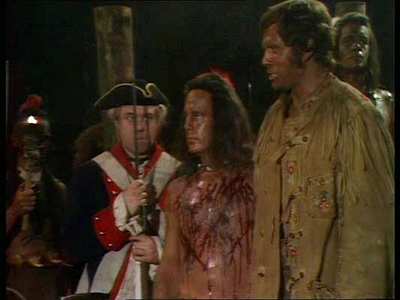
Features
The extras here are fairly slim pickings though with three hours of actual programme on each of the two discs, this is not much of a complaint. There`s a brief text based Biography of author James Fenimore Cooper, as well as some cast Filmographies. There is also a picture gallery though these look like stills culled from the programme, which frankly you could do your self.
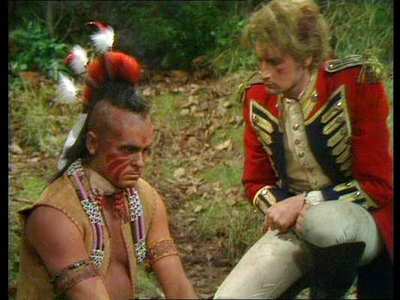
Conclusion
I can forgive an awful lot when it comes to old TV shows transferred to DVD. It`s one of the most magical things about the medium - the free availability of all those great blasts from the past. But BBC`s 1971 adaptation of `The Last of the Mohicans` was not necessarily a TV high-spot in the day, and it`s most certainly not one now.
Despite being a fairly faithful telling of the tale, its six-hours spread out across eight episodes is fairly hefty viewing with very little return. It`s creakingly slow, and the frequent cutting from 16mm film exteriors to old-school video interiors destroys any possibility of suspending disbelief.
`Hawkeye` is played fairly convincingly but is badly let down by some of the support, many of whom have the worst Scottish accents you`re ever likely to hear committed to DVD.
Fans of the series, or those who have fond and nostalgic childhood memories of having seen this air in the early seventies may find this an enjoyable re-visit. Anyone else though should avoid.
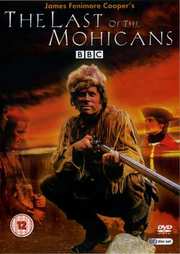
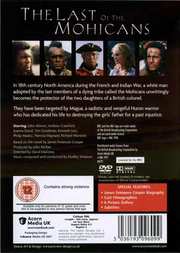





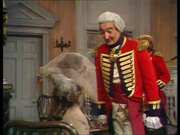

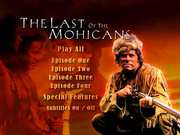
































Your Opinions and Comments
Be the first to post a comment!